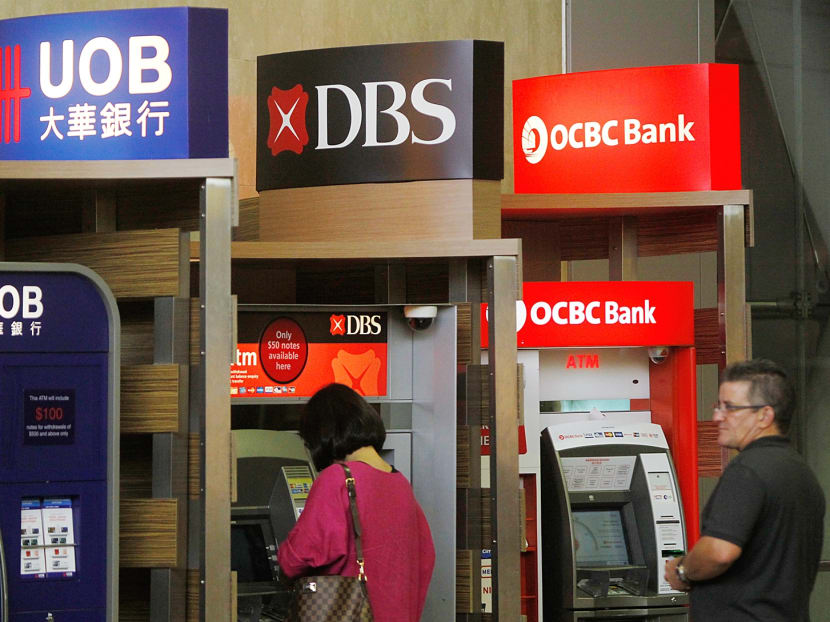OCBC registers record profit, UOB falls short
SINGAPORE — The Republic’s second and third-largest banks turned in a mixed second-quarter report card today (July 31), with Oversea-Chinese Banking Corp (OCBC) surpassing expectations to register record earnings while smaller rival United Overseas Bank (UOB) slumped.

TODAY file photo
SINGAPORE — The Republic’s second and third-largest banks turned in a mixed second-quarter report card today (July 31), with Oversea-Chinese Banking Corp (OCBC) surpassing expectations to register record earnings while smaller rival United Overseas Bank (UOB) slumped.
OCBC said its net profit for the April-to-June period rose 14 per cent from a year ago to S$1.05 billion, higher than the average forecast of S$971 million by seven analysts polled by Reuters.
The strong performance was driven by higher net interest income and non-interest income segments. Contributions also increased from overseas operations, such as OCBC Wing Hang in Hong Kong, OCBC NISP in Indonesia, as well as from associate Bank of Ningbo in China.
For the same period, UOB posted a 5.7 per cent drop in net profit to S$762 million, well below the average S$819 million predicted by five analysts in a Reuters poll. The bank attributed the decline to a drop in trading and investment income, mainly due to a one-off gain from investment and revaluation previously enjoyed.
However, both banks grew their loan books further in the second quarter, with OCBC’s gross loans rising 18 per cent from a year ago to S$210 billion as at June 30, while loans at UOB rose 4.8 per cent to S$202 billion.
On net interest margins (NIMs), which is a measure of lending profitability, both banks said they benefited from the rising Singapore Interbank Offered Rate (SIBOR) that many mortgages and other loans are priced against. Compared to the second quarter last year, UOB’s NIM increased 6 basis points to 1.77 per cent. However, OCBC’s NIM eased 3 basis points to 1.67 per cent as the improvement in customer loan spreads was offset by lower loan-to-deposit ratio and reduced money market gapping activities.
Mr Bernard Aw, analyst at IG Markets, said rising interest rates should bode well for banks in Singapore.
“Both banks, as well as DBS, should benefit from higher local interest rates… Overall, the outlook for the local lenders is expected to be a tad brighter, buoyed by hopes the United States central bank would announce an interest rate increase in the coming months,” Mr Aw said in a research note.
Earlier this week, Singapore’s largest bank DBS reported a 15 per cent year-on-year surge in net profit to S$1.12 billion in the second quarter. Its NIM jumped 8 basis points to 1.75 per cent, the highest in 13 quarters.
UOB Chief Executive Wee Ee Cheong said: “Even as growth is expected to moderate in the regional markets, we are comfortable with the resilience of our portfolio and adequate level of provisions. Our core business continued to deliver with growth in net interest income and fee income.”
OCBC chief executive Samuel Tsien said the lender will focus on financing offshore activities from the Republic.
“Although Singapore’s domestic loan demand has been quite weak, we are still able to maintain the Singapore loan book, primarily because we have been using Singapore as a financing base for offshore activities… We feel that the regional flow business is going to be very important in the next few years as we continue to see weak domestic demand here,” he said.
Mr Tsien added that OCBC is keen on tapping opportunities that will arise from increased regional connectivity. Under the One Belt, One Road project, the bank has set its eyes on Indonesia’s plan to connect Jakarta and Surabaya via high speed rail.
“We are interested in all activities that may arise out of One Belt, One Road. At the present time, we actually do not see a lot of activities yet. I think the only two that can be attributed to One Belt, One Road is the road in Pakistan and the rail that will link up Jakarta and Surabaya, none of these two have taken off yet. We’re interested to look at it in particular the Indonesia project. We like this initiative because besides the main project, there will also be a lot of complementary activities,” he said.





